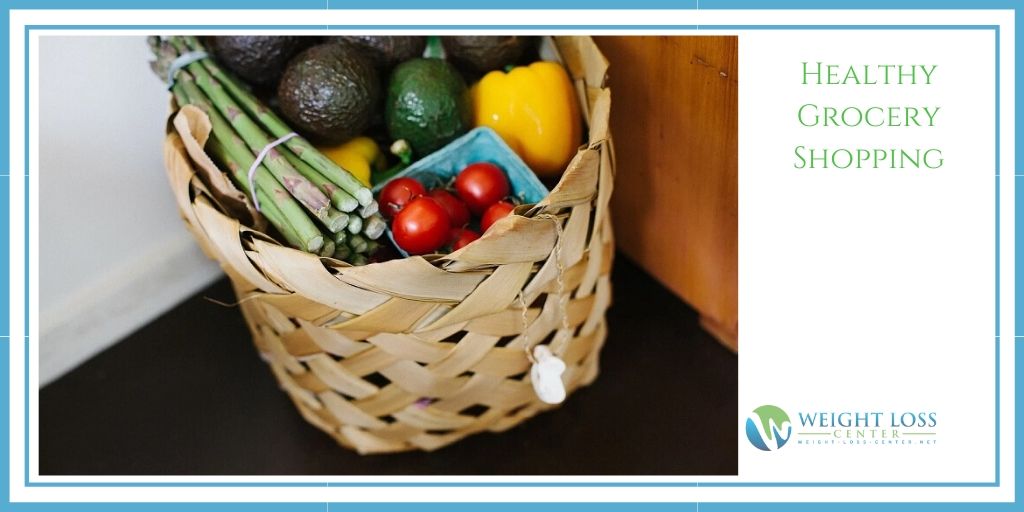
Healthy Grocery Shopping
- Hits: 6422
Losing weight by sticking to your weight loss program starts with healthy grocery shopping. What we buy affects how well we eat. By buying foods that are healthy, instead of empty calorie junk, you eliminate the opportunity of eating these diet-killing foods.
Begin Healthy Grocery Shopping with Planning
Meal planning is very helpful when it comes to preparing a healthy grocery shopping list. If you plan your meals ahead then you will be more inclined to only purchase what you need and avoid the foods that you don't. This can make your grocery shopping experience both pleasant and short.
This doesn’t mean that your healthy grocery shopping will require you to spend hours per week planning every meal you plan to make. That said, the more you can plan in advance, the more prepared you’ll be. It will save you money, time, and unwanted calories all at once.
Meal planning can feel intimidating, but it’s not nearly as bad as you might think. The first couple of weeks are usually the most challenging. They involve getting your mind wrapped around a new way of thinking about your food. That said, after the first couple of weeks, you will start to do it more efficiently and naturally. It will become a habit that is a normal part of your life. It will mean fewer last-minute trips to the store, less indecision about what you’ll have to eat, and fewer fall-backs on take-out or delivery because you’re feeling uninspired to come up with a meal.
Healthy Grocery Shopping Tips
Know What You Want
- Spend some time planning out the meals your family will eat for the upcoming week. Check recipes if you need to so that you have all the ingredients you need.
- In future weeks, have a list on the fridge just like you’d keep a grocery list. This can let you and other family members add meal requests or recommendations, so it won’t be up to one person to come up with all the ideas. This could mean you have certain meals regularly or that you are trying new things. Either way, it will mean that the meals the family wants to have will be included on the list.
- Consider meals that require similar ingredients, that can be made in large batches or that have components that can be made at once to cover two nights. For instance, chili can be made in massive batches so some can be frozen for a later date. It has similar ingredients to salads (the toppings). That said, it can also let you use it as a sauce on a stir fry the next day if you want to get creative.
- Check your cupboards to see what you have on hand already so that you only buy what you really need. The last thing you need to do is have far too much of one ingredient and not enough of others. Check what you already have, then create a list based only on what is needed.
Make a List, Check It Twice, and Stick to It
- Creating an organized list of the food you need will help you stay focused and on track. If you really want to do yourself a favor, list your items in the order in which you’ll find them in the store. List all the produce in one section, then meats, dairy, grocery, and so on. That way, you’ll find it even easier to stick to your list while you’re in the store because it is guiding you through the entire shopping experience.
- Buy enough food for the meals you’ve planned for the week as well as food for healthy snacks between meals. Don’t forget that meals aren’t the only things you’ll be eating. Moreover, snack time is one of the riskiest times for breaking away from healthy foods unless you plan in advance.
- Arrange your fridge into categories, such as fruits, vegetables, milk products, and meats or meat alternatives. Do the same with your cupboards with cereals, canned goods, etc. This makes it much easier for you to put everything away, find it when you need it, and to be able to check for it when it comes time to make another shopping list.
Have a Snack, a Nap, or a Break before shopping
- Eat something before you head off to the grocery store to prevent impulse buying.
- Avoid shopping when you’re hungry, tired, or short of time.
Shop alone when possible
- If possible, leave young children or other “non-shoppers” at home.
- If you bring your children along, let them help you. Talk about healthy food choices and show them examples. Discuss prices, nutrition, portion sizes and whatever else may help them to become healthy grocery shoppers too one day.
Understand the Lay of the Land
- For the most part, stick to the outer edges of the grocery store. Healthier food choices, such as fruits and vegetables, meats and dairy tend to be on the outer edges of stores.
- Avoid the high-fat and high-sugar foods on the shelves in the centre of the store. Stay out of the chip and junk food isles all together.
Learn About Labels
- Use food labels to see differences between similar products. Choose nutrient-rich food.
- Use the web to learn more about using food labels to make healthy choices.














